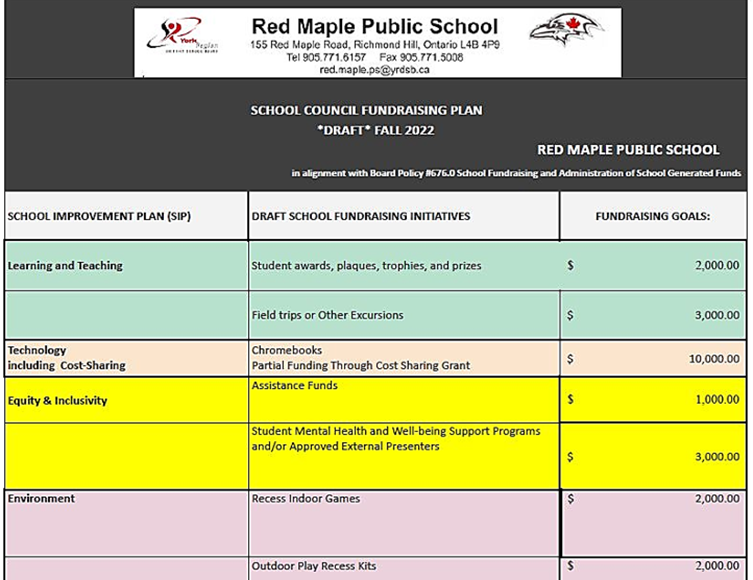Whether your school is public or private, fundraisers are likely an essential source of the money needed for various purposes not covered by the school’s budget, such as extracurricular programs, classroom supplies, and building or technology upgrades.
However, when schools organize fundraisers, they often repeat several common mistakes that undermine the success of their fundraising efforts.
In this article, we’ll highlight five fundraising mistakes your school should avoid and provide some best-practice tips on how to ensure your fundraisers are well-planned, well-executed, and well-received.
- Underestimating the Importance of Planning
- Neglecting Proper Volunteer Management
- Failing to Put Enough Effort Into Promotion
- Managing Fundraisers With the Wrong Software
- Organizing Too Many School Fundraisers
- Conclusion
Underestimating the Importance of Planning
Lack of proper planning is the key reason behind many failed or disappointing school fundraisers.
The best way to avoid this kind of negative outcome is to create a detailed plan for each individual school fundraiser—along with the school’s umbrella fundraising strategy.
When a school fundraiser is unsuccessful, it usually implies something went wrong while the event was planned by the school fundraising committee.

Source: Facebook
More precisely, the committee—typically composed of PTA/PTO members (school staff and parent volunteers)—has fallen prey to one or more common pitfalls school fundraisers are prone to, such as:
- lack of proper promotion and/or community engagement
- unrealistic fundraising goals and/or inadequate incentives
- limited resources in terms of time, money, and volunteers
- scheduling conflicts and/or competition with other fundraisers
If any of these factors aren’t properly taken into account during the planning stage, they can result in disorganized fundraisers that are more difficult to manage, making it less likely that the fundraiser will achieve the expected results.
And that’s why planning is crucial.
First, your school council/board should establish a strategic plan—like the one shown below—for the whole fundraising year.

Source: YRDSB
Then, at an appropriate time ahead of each fundraiser, the committee should create a detailed plan for that specific fundraising event.
Such a plan should include:
- clear goals: define the purpose and the target amount of the fundraiser
- budget: outlines expected costs, helps track progress and profitability
- timeline: sets the milestones and deadlines for each fundraiser-organizing task
- target audience: identifies potential donors, their interests, and preferences
- marketing strategy: defines how to promote the fundraiser to the target audience
- follow-up plan: specifies how donors will be thanked and fundraiser results reported
As you can see, the fundraising committee has much to decide on and plan for.
However, meticulous planning can generate outstanding results, like in this example of a 4-year fundraising campaign run by the school of dentistry, which exceeded its initial goal—collecting 8 million dollars—by 50%.
Source: UA
According to Paul Major, school chair, the planning of this campaign took nearly two years, so he is pleased—but not surprised—by the campaign’s success.
This is a great example of how timely and careful preparation of fundraisers can help schools not only avoid the common pitfalls of inadequate or rushed planning but also all but guarantee that their fundraiser will yield extraordinary results.
Neglecting Proper Volunteer Management
Fundraisers are built on the premise of collective cooperation and solidarity, and volunteers—parents and students—are their backbone.
Therefore, neglecting proper volunteer management can hinder the success of school fundraisers.
In other words, if your volunteers feel neglected or unappreciated, that can cause a lack of motivation to participate in a fundraiser.
A lack of motivation, in turn, results in low volunteer turnout, which then makes it difficult—if not impossible—to achieve your fundraising goals.
That’s why schools should always remember that PTA/PTO members (parent volunteers) and their children (student volunteers) are neither getting paid nor are they obliged to participate in any fundraiser.
So, the first thing to do is not forget that fundraising volunteers are giving their precious time to collect funds for your school, meaning they can feel overwhelmed and overworked, as discussed in this article.
Source: ABC
To quote Tim Spencer, president of the P&C Federation:
Across the board, volunteers are getting harder to attract and retain, especially as life gets more complex.
He has also highlighted that some parents have two or three jobs, meaning they’re unable to dedicate any time to helping the school.
Against this background, what can your school do to ensure it will have a sufficient number of volunteers for its fundraisers?
For starters, you should consider the availability, skills, and interests of potential volunteers, so your volunteer recruitment strategy can target the right people for a specific fundraiser.
Source: PTO Today
Next, your volunteers should be given clear instructions and guidelines, including timelines, goals, and expectations.
Moreover, the time, place, duration, and description of their volunteering role should be clearly communicated, and any required training and resources should be provided.
That includes readily answering volunteers’ questions and addressing their concerns.
Finally, after the fundraiser, the contributions of your school volunteers should be recognized, and they should be rewarded in some way as an incentive to keep participating in your school’s future fundraisers.
This “reward” can be anything from a thank-you email to small gifts, and the internet is full of great suggestions, like these customized honey jars.
Source: PTO Today
Overall, volunteers are the lifeblood of school fundraisers, so schools should invest their time and effort in effective volunteer management.
When volunteers are properly trained, supported, and appreciated, fundraisers will run smoothly and achieve the desired results.
Failing to Put Enough Effort Into Promotion
Not putting enough effort into promoting a school fundraiser is probably the most common mistake that often results in schools falling short of their fundraising goals.
This lack of promotion also arises from the two previous mistakes we covered: not investing enough time and effort in properly planning the fundraising event and not preparing (recruiting, training, supporting, and motivating) volunteers.
After all, fundraising is, first and foremost, a collective effort, so spreading the word and engaging with the community is crucial to the success of any such event.
So, to avoid low community support, inadequate participation rates, and insufficient funds raised, schools should promote their fundraisers across different traditional and digital marketing channels.
Here’s a list compiled by Clay Boggess, a fundraising expert, that includes both digital and traditional ways you can use to market your school fundraiser:
Source: Big Fundraising Ideas
As you can see, a fundraiser—be it a bake sale, silent auction, or charity gala—can be promoted using any appropriate combination of these marketing methods.
In other words, you can combine and use the methods evaluated as the most effective and cost-efficient.
Here, we’ll just reflect on two that are both very efficient and affordable.
The first one—at the top of the list—is social media.
An upcoming school fundraiser should be promoted on social media platforms like Facebook, Instagram, and Twitter, where the school can post about its fundraiser and ask others to share the posts and spread the word.
Source: Instagram
The second marketing method we wanted to highlight—and arguably the most important one for the success of your fundraiser—is word of mouth.
Simply put, when it comes to generating interest and encouraging participation in your school fundraiser, there is no replacement for word-of-mouth recommendations (offline and online).
In other words, volunteers, parents, and students should be encouraged to spread the word about the event to their friends, family, and colleagues.
Moreover, they should be provided with promotional materials such as flyers, social media graphics, and email templates to help them share the message effectively.
At the same time, your school should leverage its alumni network, local businesses, and community organizations to promote the fundraiser.
In summary, the success of a fundraiser primarily depends on how much thought, time, and effort the fundraising team has put into promoting it using the right combination of traditional and digital marketing channels.
Managing Fundraisers With the Wrong Software
In this digital age, potential volunteers, donors, and attendees of your school fundraiser have come to expect the convenience of online communication and payment options offered by various software tools they’re using on their laptops, tablets, and smartphones.
However, your school may be relying on impractical solutions, like still using Excel spreadsheets to manage its fundraisers or utilizing a patchwork of software solutions not designed for fundraising purposes.
In the case of spreadsheets, they’re time-consuming to update, error-prone, and difficult to organize, let alone share with other team members.
Source: WallStreetMojo
As for using a range of different software tools to manage your fundraisers, that can work if all those systems are fit for fundraising and well-integrated.
However, that’s often not the case, which leads to—just like with spreadsheets—manual data entry, errors, and data inconsistencies, all of which can cause confusion or misunderstandings between the fundraising team members.
Another major consequence of using the wrong software solutions is potential non-compliance with accounting and tax regulations pertaining to fundraisers.
Therefore, it’s better to use a single fundraising software that can track donations, process payments, communicate with volunteers and donors, and handle event registrations all in one platform.
One such solution is Regpack.
Source: Regpack
As you can see, Regpack enables schools to create custom volunteer and donor registration forms, process online payments securely, register offline payments (cash, check), and track donations in real time.
Therefore, schools should utilize this or similar software—instead of spreadsheets or unsuitable patchwork solutions—to minimize errors and miscommunication, ensure regulatory compliance, and streamline their fundraising efforts.
Ultimately, managing fundraisers with the right software ensures a smooth fundraising experience for your donors, volunteers, and team members.
Organizing Too Many School Fundraisers
It’s clear that fundraisers are a great way to raise money for your school, but organizing too many throughout the year can result in donor fatigue.
In other words, donors—just like volunteers—can get overwhelmed by too many requests for their time and money, which makes it less likely they’ll participate and donate during fundraising events.
As a result, participation rates and donated amounts can be underwhelming, particularly when compared to the time and effort invested in organizing these events.
To avoid donor fatigue, schools should consider diversifying their fundraising efforts instead of relying only on fundraising events.
For example, they can set up their own online store—like the one below—and sell merchandise year-round.
Source: CalHigh
As you can see, this enables the school to generate some income from selling school-branded clothes and other items.
Perhaps even more importantly, an online store allows the school to run ongoing fundraising campaigns for various purposes, such as badminton (as shown above) and many other sports teams and matches, arts programs, drama courses, and different school events.
As shown below, anyone interested in donating to any school program can easily do that online whenever it’s most convenient for them.
Source: CalHigh
We also highlighted the option where donors can donate money in installments, which is another way to increase donor convenience and encourage donations.
Of course, schools can use fundraising software like Regpack to—along with managing fundraisers—set up an online store and enable recurring donations.
This allows schools to raise money between fundraisers and provides donors with a convenient and easy way to support the school.
That way, schools can center their fundraising strategy around holding two or three main fundraisers a year, thus avoiding donor fatigue.
Moreover, these events can be promoted—and online donations can start to be collected—using the web-store and other features of the school’s fundraising software.
Conclusion
We’ve covered five fundraising mistakes your school should avoid and suggested ways to do that.
Namely, your school should invest time and effort in planning fundraisers well, proper volunteer management, appropriate promotion channels, and the right software.
Schools should also look into finding ways to raise money without organizing too many fundraisers, to prevent donor fatigue from setting in.
Ultimately, your school gets additional funds to improve its programs and facilities, parents get involved in community and school activities, and students learn about the importance of teamwork, creativity, and caring about others.
Therefore, good fundraising creates a win-win situation for everyone.

